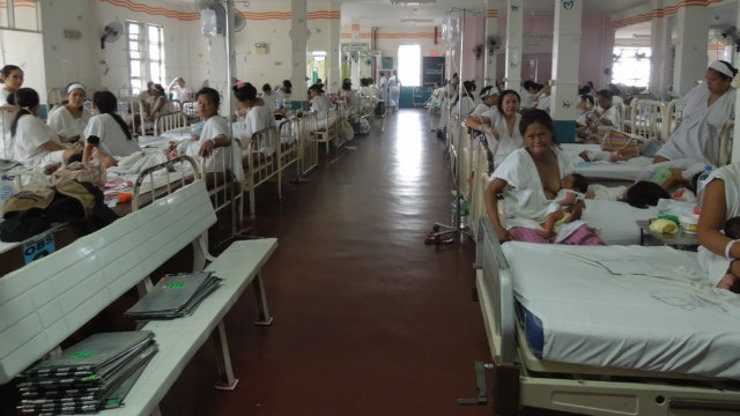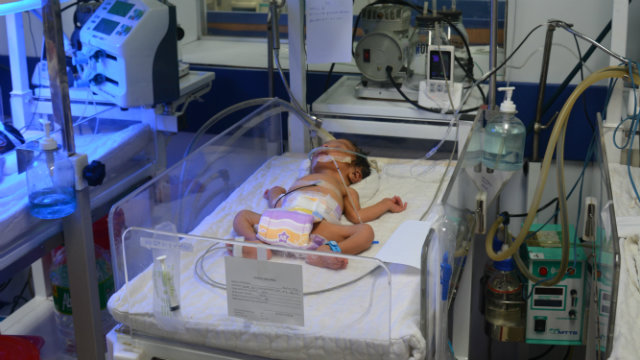SUMMARY
This is AI generated summarization, which may have errors. For context, always refer to the full article.
 The pace of progress toward Millennium Development Goal (MDG) 4 for child survival is accelerating as the 2015 target draws nearer. In the Philippines, the effort to tackle child mortality over the past two decades has made remarkable advances.
The pace of progress toward Millennium Development Goal (MDG) 4 for child survival is accelerating as the 2015 target draws nearer. In the Philippines, the effort to tackle child mortality over the past two decades has made remarkable advances.
According to the UNICEF report A Promise Renewed, the country’s under-5 mortality rate has declined by half since 1990, dropping from 59 to 30 deaths per 1,000 live births in 2013. This steady improvement can be attributed to a set of effective programs and interventions carried out by the Government and the Department of Health (DOH), including breastfeeding promotion, micronutrient supplementation, immunization of both children and mothers, integrated management of sick children, child injury prevention and control, birth spacing, and proper hygiene.
However, despite these advances, mortality during the neonatal period (the first 28 days of life) is falling more slowly and now accounts for 47% of all under-5 deaths.
Premature birth, complications during birth, and infections still claim thousands of lives every year.
Reaching every newborn

Underlying the statistics cited above is the harsh reality that many newborns don’t survive infancy.
Even more sobering to consider is that many of these deaths result from diseases and conditions that are easily preventable or treatable when proven, cost-effective solutions are available.
Evidence shows that if the Philippines is truly committed to accelerating progress in reducing child mortality and meeting MDG4, it must concentrate more attention and resources on delivering quality care and high-impact newborn solutions at the time of birth and during the critical first days and weeks after birth.
As a matter of fact, the Philippine Government has been sharpening national strategies on maternal, newborn, and child health, redoubling efforts to reach women and children in the country’s more remote communities, where hospitals are too often ill-equipped to serve vulnerable populations. To demonstrate their accountability, the Government and the DOH recently signed a Declaration of Commitment, calling for collaborative efforts to extend access to life-saving interventions.
Fabella Breath of Life Program
Mobilizing development partners, civil society groups, and other stakeholders is essential to a more rapid reduction in newborn deaths.
One of the most successful partnerships established by the DOH in recent years is its collaboration with Breath of Life, a program of the U.S. development organization East Meets West (EMW), an affiliate of Thrive Networks. Breath of Life addresses the multiple challenges that hospitals in low-resource environments face in reducing neonatal mortality and morbidity, providing an integrated solution to ensure continuum of care during the neonatal period.
Implementation of the Breath of Life program in the Philippines began in 2012 and rapidly made a large impact at two pilot hospitals, Philippine General Hospital and Dr Jose Fabella Memorial Hospital in Metro Manila. At Fabella, the key achievements of the partnership were:
- Provision of Appropriate Medical Equipment
When technologies designed for high-resource settings are used in low-resource settings, they frequently break or fall into disuse because of harsh environmental conditions, lack of specialized high-tech maintenance, or lack of necessary consumables. Breath of Life offers a comprehensive suite of affordable, highly effective technologies to provide quality neonatal care in low-resource hospitals. These machines are robust, simple to operate, and do not require a regular supply of consumables.
The Breath of Life program provided Dr Jose Fabella Memorial Hospital with: 5 CPAP machines to treat respiratory distress syndrome and other common respiratory pathologies; 5 phototherapy machines to treat neonatal jaundice; 5 warmers to stabilize the temperature of infants suffering from hypothermia; 5 pulse-oximeters to measure blood oxygen levels; and infection control equipment. - Intensive Training
This is for clinicians in Essential Newborn Care, Advanced Care Techniques, and Equipment Use. In addition to facilitating the donation of the appropriate medical equipment listed above, Breath of Life provided a comprehensive training program for clinicians, nurses, and biomedical technicians in the use and maintenance of the technologies donated by the program. Trainings included site visits at MTTS (the manufacturer of the medical devices) in Vietnam, and international workshops with leading neonatologists from the United States. - Equipment Maintenance
Breath of Life set up an efficient technical support mechanism within the hospital’s existing technical team to ensure that problems are dealt with in a timely manner and all machines receive regular maintenance.
- Monitoring and Evaluation of Program Effectiveness
Breath of Life collected detailed patient outcomes to monitor and evaluate the impact of the interventions. At Dr Jose Fabella Memorial Hospital, the program triggered a substantial reduction in nosocomial infections. It also led to a significant reduction in infant mortality in patients suffering from respiratory distress syndrome. This result can only be attributed to the introduction of CPAP machines.
Breath of Life also produced several indirect benefits, including reducing the burden on tertiary hospitals as secondary hospitals become better equipped to manage newborns; relieving families from the burden and expense of travel to multiple hospitals during critical time of need by ensuring continuum of care; strengthening the health system’s capacity to deliver neonatal care as train-the-trainer approach expands to additional hospitals.
Lasting impact, growing partnership
Breath of Life has made a large impact not only at Dr Jose Fabella Memorial Hospital, but also at the other pilot hospital involved in the project, the Philippine General Hospital.
Hundreds of infants have been treated, many of whom may have otherwise died or suffered permanent disabilities.
“The Breath of Life program has been very supportive in providing care for our critically ill newborns,” said Mary Christine Alice Damian-Tumale, Chief Neonatologist at the Fabella Department of Newborn Medicine. “Since 2012, the program has provided appropriate equipment, intensive training, ongoing maintenance, and replacement parts, giving us the tools we needed to fulfill our vision of delivering care.”
The excellent results of the program have laid the groundwork for expansion to other areas of the country. The program is expanding to almost 20 hospitals throughout the country – providing life-saving technologies in most of the public hospitals that act as a referral centers for the population.
For example, thanks to the partnership with ANT – Amici della Neonatologia Trentina – an Italian NGO with a large presence in newborn care services in Southeast Asia, and a generous contribution from the Region Trentino Alto Adige, in Italy, in 2014 the program reached 4 more key hospitals in the country: Eastern Visayas Regional Medical Centre in Tacloban, Vicente Sotto Memorial Medical Centre in Cebu, Bicol Medical Centre in Naga, and Cotabato Regional and Medical Centre in Cotabato.
Breath of Life is contributing in a very concrete way to the reduction in infant mortality and morbidity in the Philippines. – Rappler.com
Luciano Moccia is the International Director of Breath of Life. He is based in Timor-Leste. Luciano joined Thrive Networks in January 2008 to direct the Breath of Life Program, which aims to assist hospitals in improving newborn care activities with technology and training.
Add a comment
How does this make you feel?

There are no comments yet. Add your comment to start the conversation.